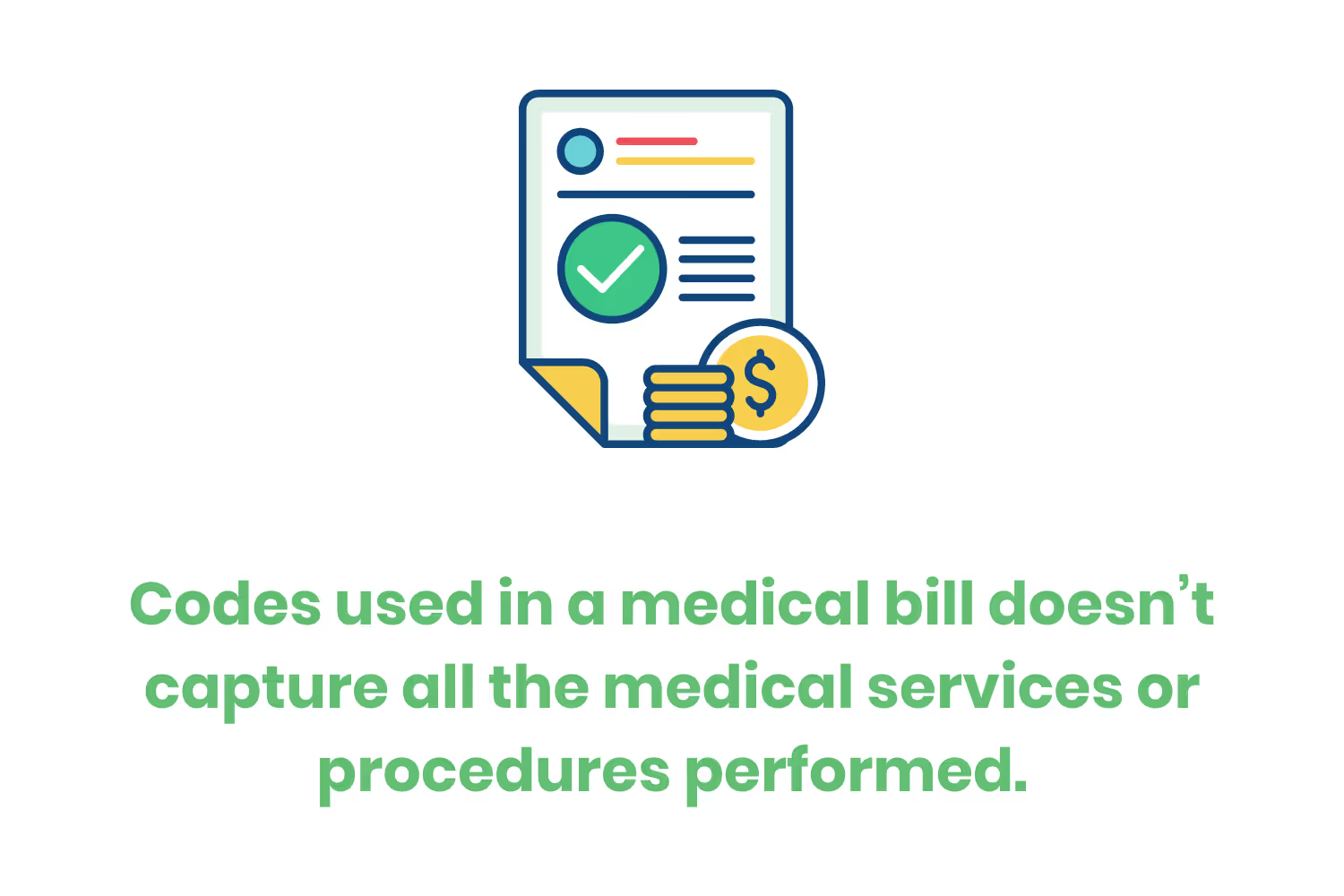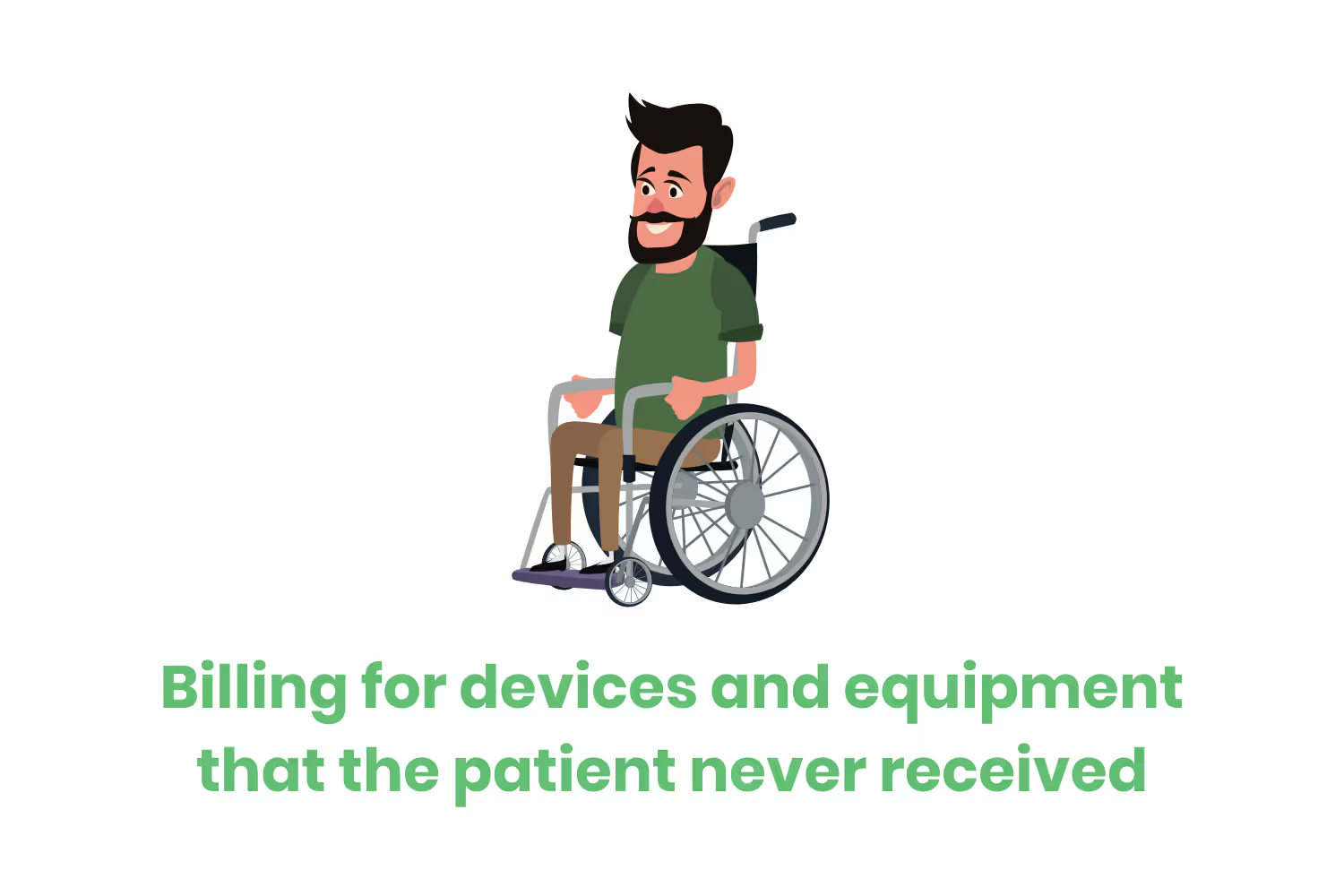The Extensive List of Common Unethical Medical Billing Practices
Let’s dig deeper into these six common forms of unethical medical billing practices. Each of which is illegal and can result in court cases.

$2.3 billion of recovered fraudulent healthcare reimbursement dollars came in 2018.
That seems like a huge amount, doesn’t it?
If the government could recover several billion dollars, it makes me wonder how much fraud actually occurs every year.
Fraud in the medical billing world can occur in several ways.
You see, 46% of provider fraud cases were due to duplicate billing and phantom charges. Other forms of medical billing fraud include upcoding, under coding, and medical equipment fraud.
Let’s dig deeper into these six common forms of unethical medical billing practices. Each of which is illegal and can result in court cases.
Upcoding
A billing code identifies the services and procedures provided to patients. Each code represents a specific procedure or service performed for patients. These codes are then used to determine how much insurers need to pay for the services provided.
Upcoding is where someone assigns an inaccurate medical code for a procedure to increase reimbursement.

Imagine a situation where a patient got routine medical transportation. But that’s not what the statement said. Instead, it states that the patient received emergency life support transportation.
No big deal right? Wrong. Emergency life-support transportation is much more expensive.
Another way upcoding can occur is by using medical codes that look alike to the casual observer. The similar codes end up translating to very different payment amounts, increasing reimbursement.
For example, “evaluation of speech fluency” and “speech evaluation complex” “evaluation of speech fluency” and “speech evaluation complex” may seem the same to a casual observer.
They actually have a distinct difference for healthcare professionals.
Under Coding
Under coding occurs when the codes used in a medical bill don’t entirely capture all the medical services or procedures performed.
In other words, the organization makes a false statement about the services provided and misrepresents what occurred. Under coding also fits within the definition of “abuse,” as defined by CMS as “misusing codes on a claim.”

Although this may not seem like a problem, it can backfire for an organization. This is often interpreted by authorities as attempting to avoid audits.
Any attempt to defraud the auditing process violates federal law. So although under coding seems like it isn’t that big of a deal, it can lead to some serious consequences.
Duplicate Charges
Lucky for you, this version of unethical medical billing practices is pretty straightforward. Duplicate charges, also known as double billing, are where the same bills occur multiple times even though the patient only received the service or treatment once.
In fact, over 411,000 seniors faced double billing for their medicare premiums in September 2019. This number was partly due to a glitch in Medicare’s system.
Of course, humans are prone to make mistakes, especially due to the complicated billing process.

Yet, sometimes duplicate charges are intentionally made. This can lead to criminal and civil penalties. Some of these penalties could be thousands of dollars in fines.
If the courts determine that the practice is guilty of duplicate charges, the practice may lose a significant amount of current patients and future patients.
Patients might also call the insurance company to see if the situation affected them. This, in turn, may eventually damage the trust between the insurance company and the healthcare provider.
Phantom Charges
Phantom charges are when a practice bills for a medical service or procedure that never occurred. It can also happen when a provider submits a claim for unnecessary services. This means that the treatments were only for profit.
This is the most common type of medical fraud, making up almost half of all healthcare provider cases. It’s also the most blatant form of fraud that a healthcare provider can make.

This is also related to medical malpractice in general.
For example, 22% of prescription medications are unnecessary. So are 25% of medical tests and 11% of procedures. Since all these events were unnecessary, they could be legally considered phantom charges.
20-50% of antibiotics prescribed in the US are unnecessary or inappropriate (CDC). This could also be a form of fraudulent billing and phantom charges since the medications were not necessary.
Unbundling
Unbundling also involves healthcare providers manipulating the coding system to receive higher reimbursement.
So what’s the difference?
The Federal Bureau of Investigation defined unbundling as “a practice of submitting bills in a fragmented fashion to maximize the reimbursement for various tests or procedures that are required to be billed together at a reduced cost”.

Instead of using one code to describe services provided, providers used several different codes to describe different parts of the service. This increases the presumed cost of service, which means a greater reimbursement.
Medical Equipment Fraud
Medical equipment fraud is also known as durable medical equipment fraud, or “DME”. This type of fraud occurs when the provider bills for equipment the patient never received. By doing this, the organization can receive money for services never provided.
Medical equipment fraud is one of the most common types of illegal billing practices. It costs the government millions of dollars every year.

Whistleblowers help the government by drawing attention to this type of fraud.
Other versions of this type of fraud can include billing for private bedrooms, scooters, and other motorized equipment. It can also include prosthetic limbs that patients never received.
Conclusion
As you can see, unethical medical billing can occur in many ways and there are a few that stand out more than the rest.
Upcoding is assigning an inaccurate code for a medical procedure to increase reimbursement. This is a means to lower the costs of services performed by getting more money from insurance.
Under coding occurs when the codes used in a medical bill don’t capture all the services or procedures performed. This type of illegal activity means the company tried to avoid audits by lowering the number of services performed.
Duplicate billing is where someone submits the same bill many times even though service or treatment occurred once. This can happen due to computer errors, human errors, or purposefully submitting the bills several times. Any version of this occurring has legal consequences. Naturally, intentional fraud has the most serious consequences.
Phantom charges occur when a practice bills for a medical service or procedure that was never performed. It can also happen when a provider submits a claim for unnecessary services. This type of fraud often occurs because the organization tried to superficially increase profit.
Unbundling is where a practice submits pieces and parts of services provided to maximize reimbursement. These procedures are normally billed together at a reduced cost.
Lastly, DME fraud occurs when the provider bills for devices and equipment that the patient never received. By doing this, the organization can receive money for services never provided.
There are a few ways for a patient to avoid such types of fraud. Look at all of the details of the statements you receive from a doctor's office. Examine how many statements exist for the same service. Lastly, question anything in your statements that look off.
Emphasize your product's unique features or benefits to differentiate it from competitors
In nec dictum adipiscing pharetra enim etiam scelerisque dolor purus ipsum egestas cursus vulputate arcu egestas ut eu sed mollis consectetur mattis pharetra curabitur et maecenas in mattis fames consectetur ipsum quis risus mauris aliquam ornare nisl purus at ipsum nulla accumsan consectetur vestibulum suspendisse aliquam condimentum scelerisque lacinia pellentesque vestibulum condimentum turpis ligula pharetra dictum sapien facilisis sapien at sagittis et cursus congue.
- Pharetra curabitur et maecenas in mattis fames consectetur ipsum quis risus.
- Justo urna nisi auctor consequat consectetur dolor lectus blandit.
- Eget egestas volutpat lacinia vestibulum vitae mattis hendrerit.
- Ornare elit odio tellus orci bibendum dictum id sem congue enim amet diam.
Incorporate statistics or specific numbers to highlight the effectiveness or popularity of your offering
Convallis pellentesque ullamcorper sapien sed tristique fermentum proin amet quam tincidunt feugiat vitae neque quisque odio ut pellentesque ac mauris eget lectus. Pretium arcu turpis lacus sapien sit at eu sapien duis magna nunc nibh nam non ut nibh ultrices ultrices elementum egestas enim nisl sed cursus pellentesque sit dignissim enim euismod sit et convallis sed pelis viverra quam at nisl sit pharetra enim nisl nec vestibulum posuere in volutpat sed blandit neque risus.

Use time-sensitive language to encourage immediate action, such as "Limited Time Offer
Feugiat vitae neque quisque odio ut pellentesque ac mauris eget lectus. Pretium arcu turpis lacus sapien sit at eu sapien duis magna nunc nibh nam non ut nibh ultrices ultrices elementum egestas enim nisl sed cursus pellentesque sit dignissim enim euismod sit et convallis sed pelis viverra quam at nisl sit pharetra enim nisl nec vestibulum posuere in volutpat sed blandit neque risus.
- Pharetra curabitur et maecenas in mattis fames consectetur ipsum quis risus.
- Justo urna nisi auctor consequat consectetur dolor lectus blandit.
- Eget egestas volutpat lacinia vestibulum vitae mattis hendrerit.
- Ornare elit odio tellus orci bibendum dictum id sem congue enim amet diam.
Address customer pain points directly by showing how your product solves their problems
Feugiat vitae neque quisque odio ut pellentesque ac mauris eget lectus. Pretium arcu turpis lacus sapien sit at eu sapien duis magna nunc nibh nam non ut nibh ultrices ultrices elementum egestas enim nisl sed cursus pellentesque sit dignissim enim euismod sit et convallis sed pelis viverra quam at nisl sit pharetra enim nisl nec vestibulum posuere in volutpat sed blandit neque risus.
Vel etiam vel amet aenean eget in habitasse nunc duis tellus sem turpis risus aliquam ac volutpat tellus eu faucibus ullamcorper.
Tailor titles to your ideal customer segment using phrases like "Designed for Busy Professionals
Sed pretium id nibh id sit felis vitae volutpat volutpat adipiscing at sodales neque lectus mi phasellus commodo at elit suspendisse ornare faucibus lectus purus viverra in nec aliquet commodo et sed sed nisi tempor mi pellentesque arcu viverra pretium duis enim vulputate dignissim etiam ultrices vitae neque urna proin nibh diam turpis augue lacus.



![[ANSWERED] What is a Long-Term Care (LTC) Pharmacy](https://cdn.prod.website-files.com/67e2b8210878abcba6f91ae6/68d687806a075a1cf64659b0_WhatisLongTermCarePharmacy_925.avif)
